Hey folks got some more updates for you this evening! So today I did a little bit more with the mechanical design realizing that I might want to change how things are arranged. This post is going to cover a lot, I want to talk about my proposed changes to the case and the BMS board progress.
So with the mechanical case, yesterday I talked about carbon fiber sheet and 2020 aluminum extrusion construction with sheet metal plates for wiring cells together. I still want to go that route but I want to make the battery stack its own mechanical structure out of carbon fiber sheets and integrate cooling piping/ribbon within it all as a module. This battery stack module would fit into the 2020/Cabron fiber sheet case along with all the other components of the system bolted in neatly together. I want to use 2020 aluminum for the main case and keep the internal submodules as carbon fiber sheet with tabs style boxes, this is to keep weight down. I played around in the CAD model I was working on to come to this realization. I started adding in extrusion to see how my original design concept would look and I just didn't like the idea of it hence the change of heart.
Here is where I am with the design before changing my mind:
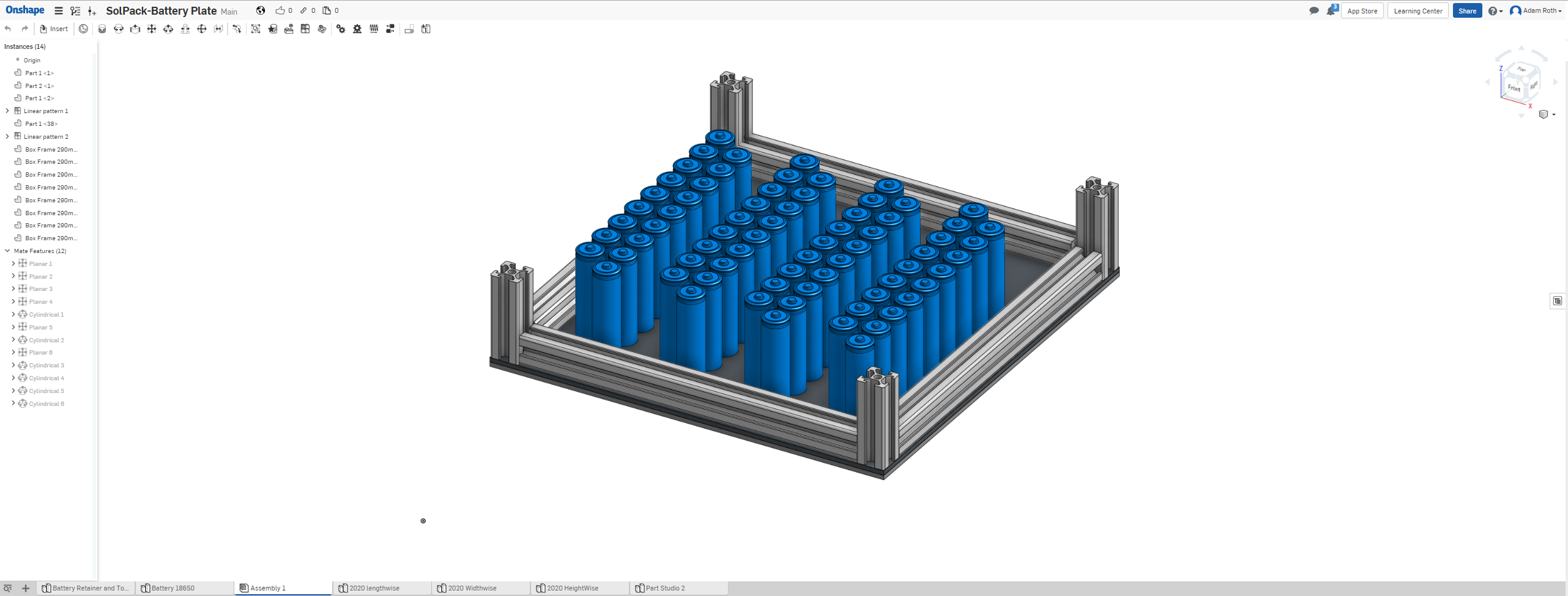
Now onto the electrical system. Even at this point I am still learning and wrapping my head around the technology and way its organized within the Model 3 battery. Jack Rickard really is right when he says its the best and most advanced battery out there, there is a lot going on. I watched his teardown video again, scoured the article, as well as looking through all the official ADI documentation. Through my searches I found all the documents relating to the evaluation kit for the LTC6813-1 from ADI, the chip that Jack suspects is the chip on board the Tesla Model 3 BMS board. My board aims to be a direct clone. From my visual inspection of Tesla's Model 3 board and looking at the layout/schematic from ADI's evaluation kit I also have strong suspicions that they are usign that chip and that the Tesla board is just a slightly modified and customized version of the evaluation kit.
The Tesla Model 3 BMS board:
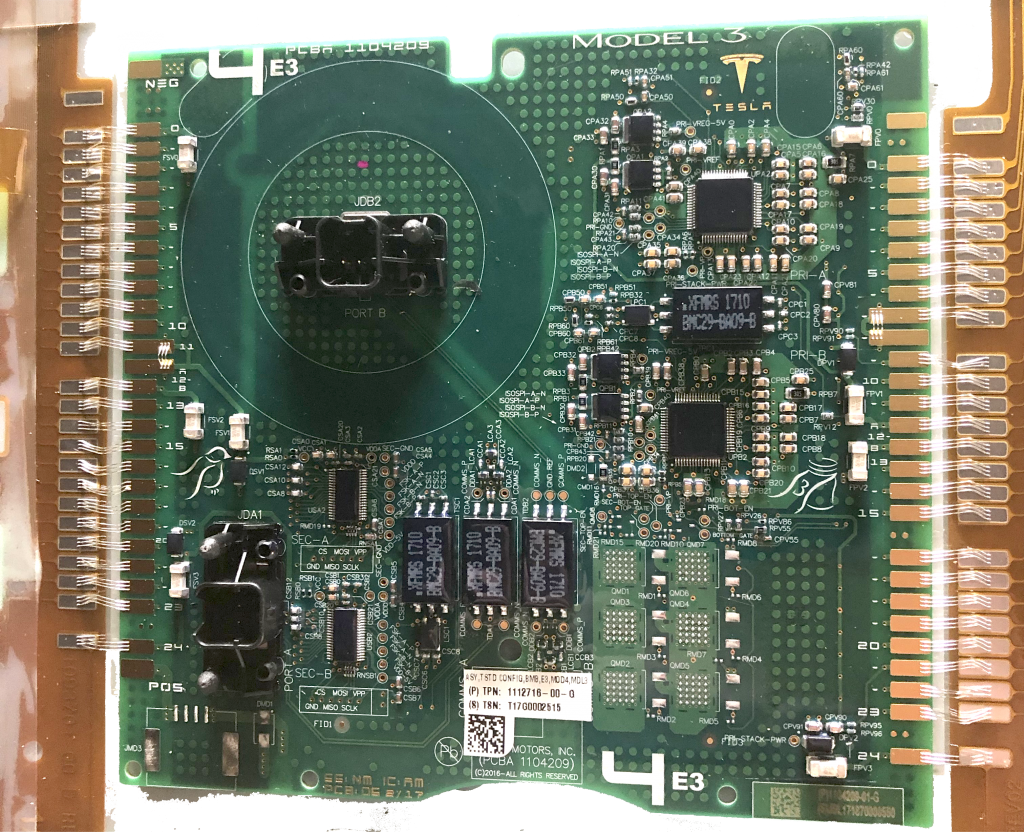
Courtesy of EVTV, original image found here http://evtv.me/2018/05/tesla-model-3-gone-battshit/
ADI Evaluation Board
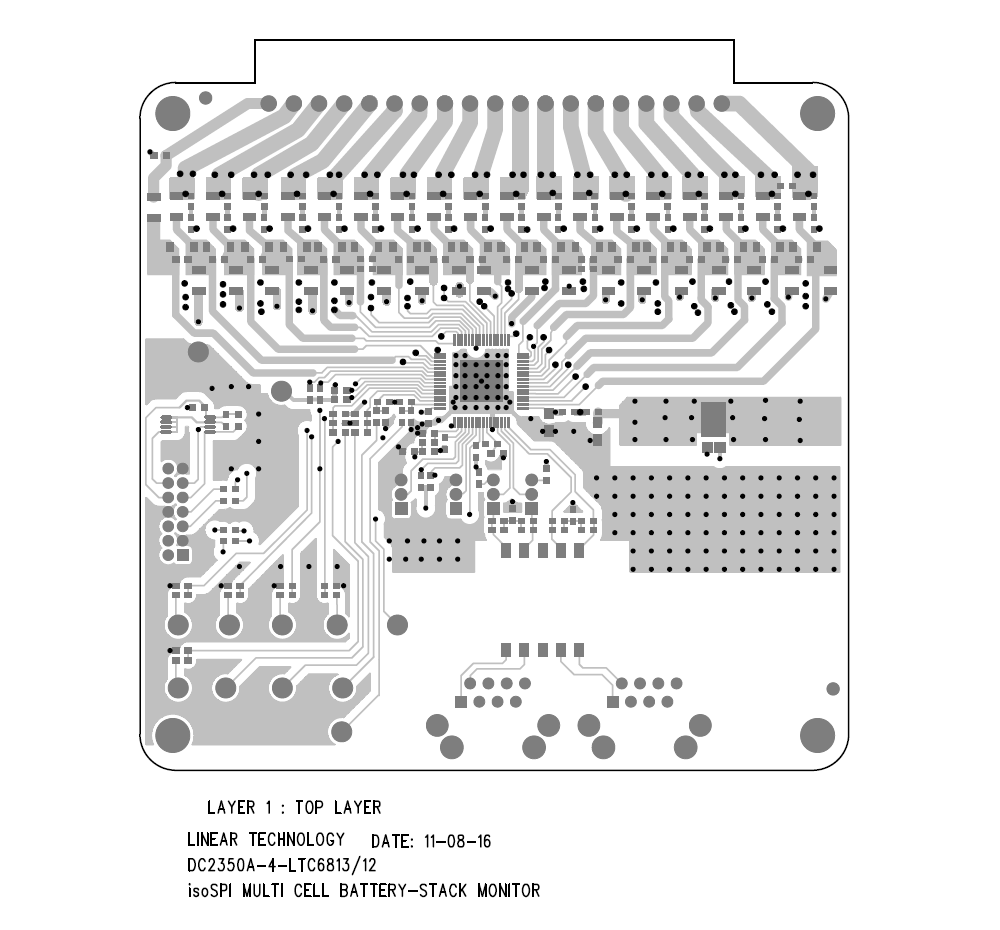
If you know me really well you'll know that I eat, sleep, breath, think, worship, and life printed circuit boards. I tend to learn more about the circuit looking at the physical tracks and components on the board. While the images dont convey a 1:1 copy, alot of the supporting circuitry seems suspiciously in the same configuration, though I could be wrong since a lot of BMS systems will be similar but these main ICs habe 64 pins and they interface over that special ISO SPI interface. ISO SPI is just SPI serialized as a single differential pair, just some highspeed IC magic. It also looks like theirs 18 circuits for each "cell" that the chip can monitor, I come to this assumption by counting the caps around the chip, you'll notice they are all part of the same mini subcircuits. A circuit per battery cell. This is all speculation at the moment until I can get my hands on some ADI evaluation hardware and battery cells, moving on..........................
While designing my custom BMS board for this pack I'd like to evaluate the actual hardware from ADI. So my plan will be to do a pilot build of the pack using no custom electronics or if any they will be simple PCBs. This pilot build would also be small scale, it would be just enough cells for 1 chip and thats it. I'd build a small battery pack from 18650 cells, wire it to the BMS evaluation kit with a custom flexPCB for wiring the cells. For control I plan to make small shielf for the STM32 Nucleo baord that has the ISO SPI chip from ADI for talking to the balancers. The idea is to build a simple version of the pack using evaluation hardware with the only custom boards being breakouts of signal interfaces.
Block diagram of Eval based pack:
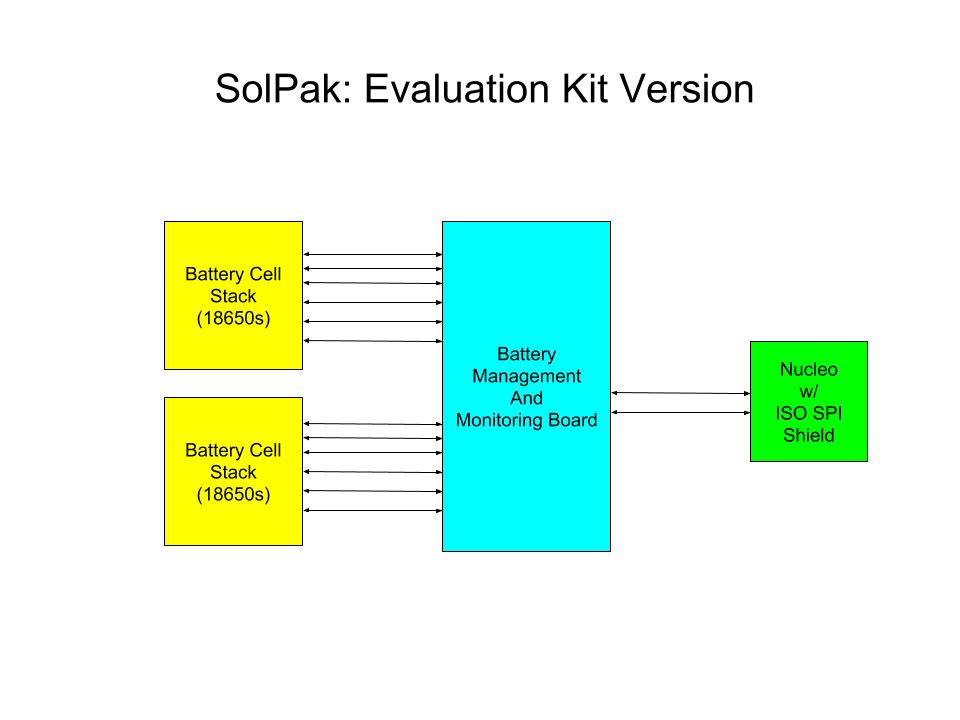
From building the pack with the evaluation hardware the hope is to learn how it operates in the real world and what to expect when hooking up the custom board to the battery stacks. As Jack Rickard mentioned in his article the BMS systems are complex and there is a lot going on with them that can be overlooked with dangerous consequences, hence why I want to deal with premade boards from ADI to test the concept.
Moving on the custom board will be rather simple and very similar to the ADI evaluation board. My custom BMS board aims to duplicate the contenst of the eval kit but two times, just like the BMS boards found in the Model 3 battery. Its not a complex design, just the two chips their reference schematics, two RJ45 connectors for ISO SPI diff signals, battery connector interface, and onboard EEPROMs for each chip. I devised the overall system of my BMS from looking at the evaluation board schematics and the LTC6813-1 datasheet. These fancy BMS chips can be daisy chained together to monitor and balance 100s of cells simultaneously. The two chips my custom BMS board will be daisy chained together, and connected to the RJ45 connectors for daisy chainging multiple BMS boards for multiple battery pack modules. Here is the proposed block diagram:
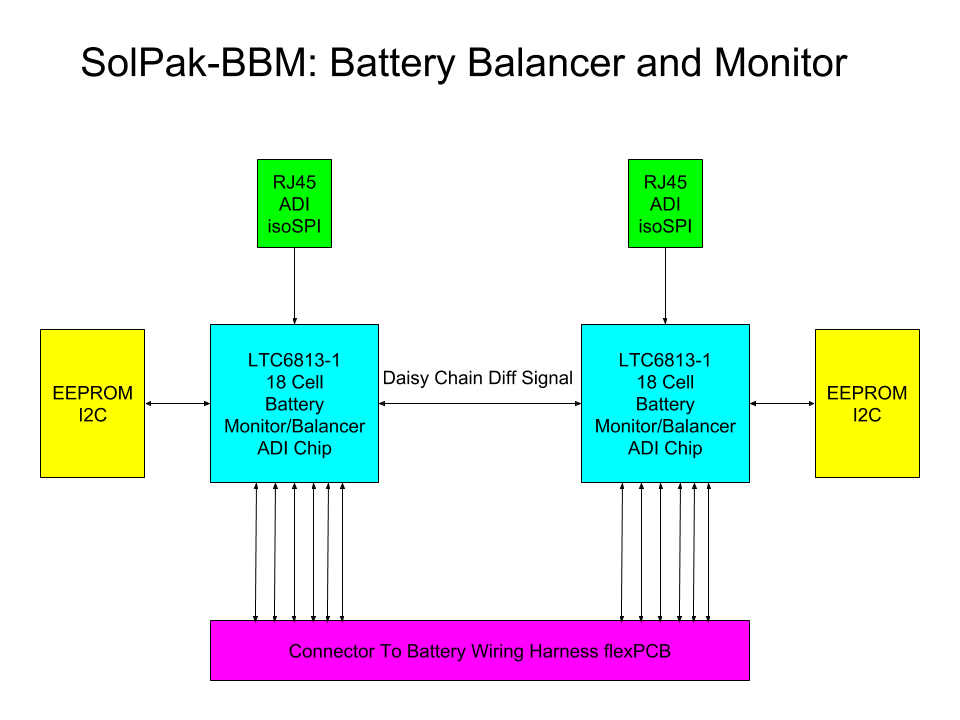
There is still a ton of work to do learning how all this stuff works, I am very much out of my element in this subject compared to past projects but its very exciting. This is also one of the first projects I've started working on where I dont have the entire system 100% figured out from the beginning, I'm dong a lot more learning on the fly with this one than the others so bare with me. On another note this project is a tremendous challenge but the pay off to me is enabling more people to have access to advanced battery technology. I'm sure in time battery pack modules from the model 3 will be available 2nd hand in junkyards but what about the rest of the world, I may not be able to clone it outright but I'm hoping to get close enough and share it all on here for everyone to have. Stay tuned folks, the fun is just beginning to start!
 AVR
AVR
Discussions
Become a Hackaday.io Member
Create an account to leave a comment. Already have an account? Log In.